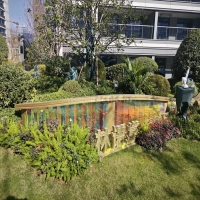Welcome to the website for landscape facilities products and knowledge.
How does the bin’s design address the need for hygiene in high-use public areas?
In high-traffic public spaces, maintaining hygiene is a critical challenge. Modern bin designs address this need through innovative features that minimize contamination risks. Touchless operation, enabled by motion sensors or foot pedals, eliminates direct contact with germ-prone surfaces. Antimicrobial materials inhibit bacterial growth on the bin's interior and exterior surfaces.
Sealed compartments and odor-control systems prevent unpleasant smells and discourage pests. Smooth, seamless surfaces with minimal crevices make cleaning easier while preventing dirt accumulation. Some advanced models even incorporate self-disinfecting mechanisms using UV light or antibacterial coatings.
For high-capacity needs, bins feature wide openings with splash guards and leak-proof liners. Clear labeling systems promote proper waste segregation, reducing cross-contamination between recyclables and general waste. These design elements collectively create a more sanitary environment in airports, malls, and other busy public areas.
The integration of durable, rust-resistant materials ensures long-term performance without compromising cleanliness. By combining functionality with hygiene-first engineering, contemporary bin designs significantly improve public health outcomes in shared spaces.
Related search:

Recommendation
Metal and acrylic color-changing combined curtain wall for large-scale public landscape facilities